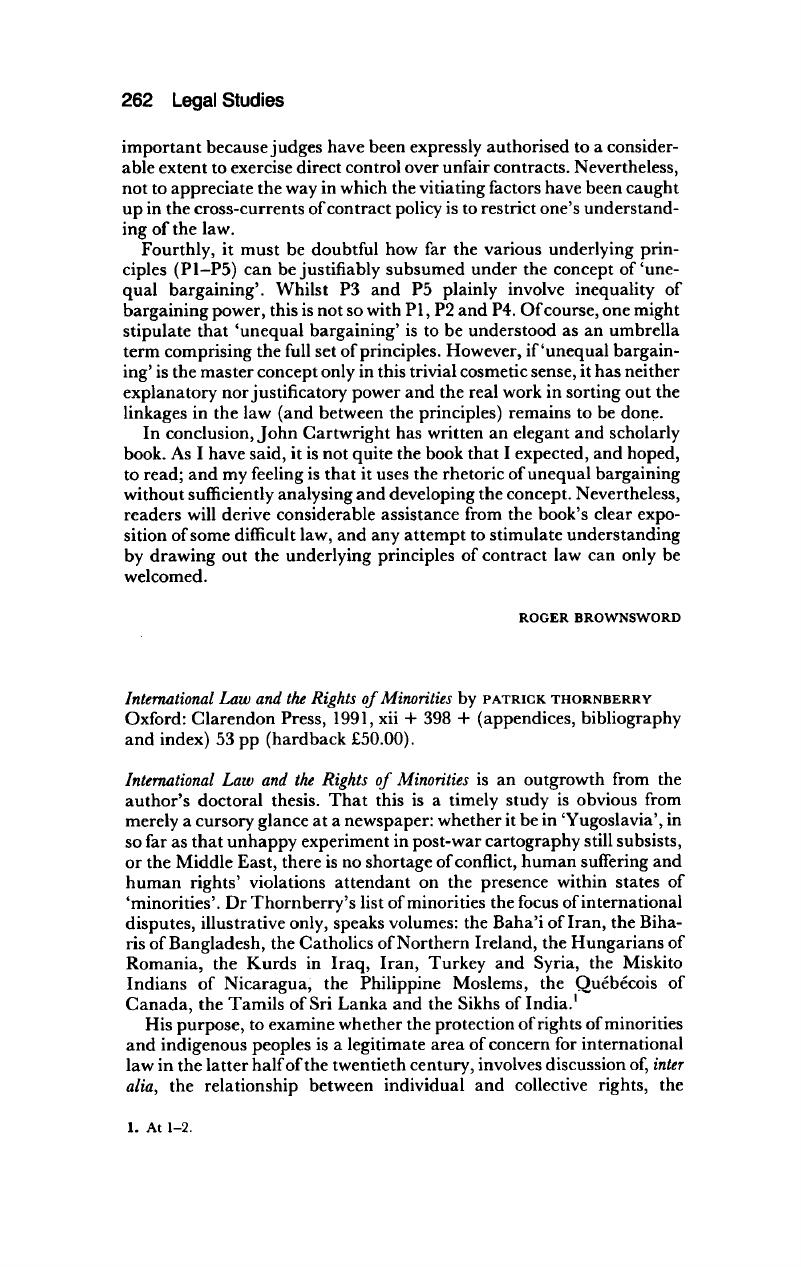No CrossRef data available.
Article contents
International Law and the Rights of Minorities. by Patrick Thornberry. Oxford: Clarendon Press, 1991, xii + 398 + (appendices, bibliography and index) 53 pp (hardback £50.00).
Published online by Cambridge University Press: 02 January 2018
Abstract

- Type
- Book Review
- Information
- Copyright
- Copyright © Society of Legal Scholars 1992
References
1. At 1–2.
2. UNTS, Vol 78,277.
3. UNTS 6 (1977) Cmnd 6702. Article 27 provides that: ‘In those States in which ethnic, religious or linguistic minorities exist, persons belonging to such minorities shall not be denied the right, in community with other members of the group, to enjoy their own culture, to profess and practise their own religion, or to use their own language.
4. At 333.
5. At 164.
6. Assimilation is ‘based on the idea of the superiority of the dominant culture, (aiming) to produce a homogenous society by getting groups to discard their culture in favour of the dominant one’ (p 4), and should be compared with integration which is a ‘process by which diverse elements are combined into a unity while retaining their basic identity. There is no insistence upon uniformity or elimination of all differences, other than the difference of each component group which would disturb or inhibit the total unity’ (ibid). The latter is obviously preferable for the protection of minority rights.
7. Cited at 331.
8. Conor Cruise O'Brien, cited at 205.
9. At 394.
10. Ibid.
11. At 1.
12. At 14.
13. At 13.
14. See eg, 379.
15. At 360, n 161.
16. Cited at 167.
17. At 395.
18. At 397.
19. At 397-8 (footnote omitted).
20. See, eg, Meron: Human Rights and Humanitarian Norms as Customary Law (1989).
21. Report of the Human Rights Committee, GAOR, 45th Session, UN Doc A/45/40, Vol 11, 1.


